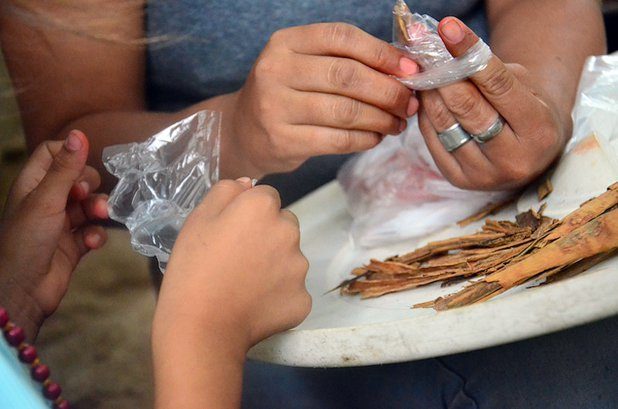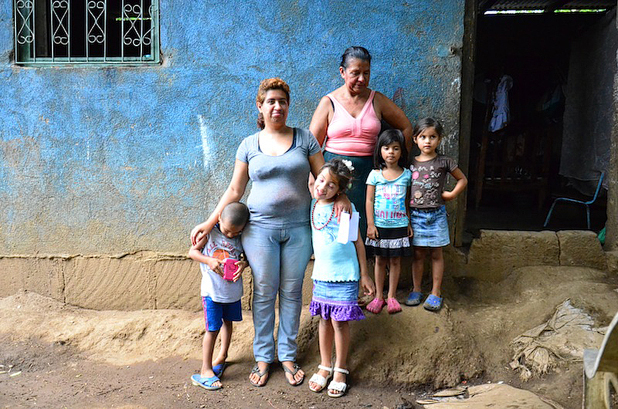Daisy breaks a large cinnamon stick into shards and places a few at a time in small plastic bags. Her daughter sits close, learns the trade. Daisy is a street vendor taking care of two kids by selling spices to passersby.
She lives in a one-window concrete box the size of my garage on the outskirts of Manaugua, Nicaragua. Sweat drips from her brow as she shares her life in broad strokes.
“Thirteen live here,” Daisy says. “Eight are children.”
“Are there any men?” I ask.
She shakes her head back and forth slowly, looking at the ground for a moment before lifting her head to look me in the eye once more. “All the women…we live here together because…we have had bad experiences with men.”
I visited with the poorest of the poor in Nicaragua last week and rarely saw a man – a father, grandfather, uncle – in the home.
They left for work, for another woman, in the dead of night, to buy groceries, after one lovedrunk evening, after a year together…and never came back.
Is the U.S. much different? Not much. My father worked for the Texas parole board for a number of years. His job was to interview countless men coming up for release – to hear their story, document the details of their offense and their lives before. Not one, he once remarked, had a dependable father.
Fatherlessness is an epidemic. 24 million children in America – that’s one in three – live in a home without a dad. After so many years of this, we can now count the consequences in many of our own communities.
 Shaun Groves
Shaun Groves


Pam says:
Thank you for your post. I am one of those single moms who opted to raise my children without their father. Actually, he opted for me to raise our children without him. And for the better, I believe. He is an alcoholic, abusive person and my children (and I!) were better off without him. Luckily, my father stepped up and became the father figure to my kids. It wasn’t easy; we struggled without a lot of physical comforts. But there was plenty of love. And when my father died 6 months ago, my kids grieved incredibly hard. His presence made a world of difference in the people my kids became.
Angie says:
My husband grew up with out a dependable father in the home. . .it leaves its scars and has serious consequences .
Thankful for grace and a God who is a father to the fatherless.
Dr. M says:
You can be fatherless in several ways. My father was in our home, but he did not want me, and would not talk to me until I was 21 years old.
I determined that I would not be like my parents, and I now have 19 boys that I am a father-figure to, and pray for them daily.
A friend and I are starting a unique fatherhood training center that will not only have fatherhood classes, but many other things, too. Just waiting on the funding.